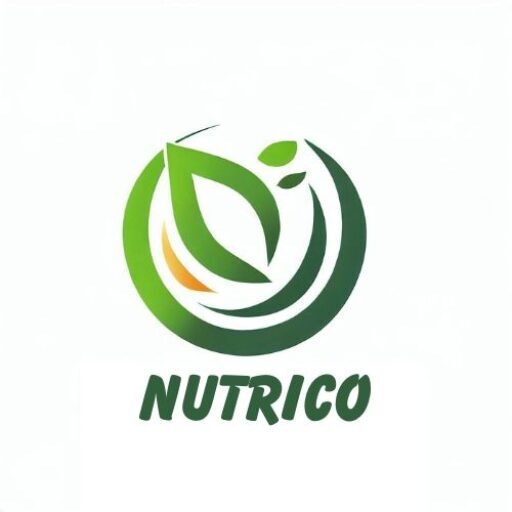Physical Fitness is a critical part of a sound way of life. With various workout routines accessible, it very well may be overpowering to know where to begin or how to structure a standard that meets your objectives. Whether you’re a novice or prepared wellness lover, understanding different exercise routine schedules and how they benefit your body can assist you with planning a viable and reasonable arrangement. This guide will investigate different kinds of exercise routine schedules, their advantages, and how to redo them for your particular requirements.
1. Grasping Your Wellness Objectives
Prior to bouncing into any exercise routine everyday practice, characterizing your wellness goals is fundamental. The sort of routine you pick will rely upon what you need to accomplish. Normal wellness objectives include:
Building bulk: On the off chance that your point is hypertrophy (muscle development), obstruction preparing ought to be a part of your daily practice.
Working on cardiovascular perseverance: Cardiovascular activities like running, swimming, or cycling assist with further developing heart and lung capability.
Expanding adaptability and equilibrium: Yoga, Pilates, and dynamic extending are phenomenal for further developing adaptability and in general body coordination.
Weight reduction and fat consuming: A mix of intense cardio exercise (HIIT) and obstruction preparing functions admirably for shedding overabundance fat while keeping up with bulk.
2. Sorts of Exercise routine Schedules
a) Strength Preparing (Obstruction Preparing)
Strength preparing includes utilizing protection from animate muscle development and further develop strength. This can be accomplished through free loads, machines, obstruction groups, or even bodyweight works out. There are multiple ways of organizing a strength preparing schedule, contingent upon your objectives:
Full-body exercises: In a full-body exercise, you focus on all significant muscle bunches in a single meeting. These exercises are great for fledglings or the individuals who can resolve a couple of times each week.
Divide schedules: For those with additional time or who need to zero in on unambiguous regions, split schedules partition the body into various muscle gatherings (e.g., chest area on one day, lower body on another).
Push-pull-legs (PPL) split: This is a well known schedule that partitions exercises into pushing works out (e.g., seat press), pulling works out (e.g., pull-ups), and leg works out (e.g., squats).
Advantages of Solidarity Preparing:
- Increments bulk and tone
- Supports digestion and helps in fat misfortune
- Fortifies bones and joints, decreasing the gamble of injury
Test Full-Body Strength Exercise:
- Squats (4 arrangements of 8-12 reps)
- Seat Press (4 arrangements of 8-12 reps)
- Deadlifts (3 arrangements of 8-10 reps)
- Columns (3 arrangements of 8-12 reps)
- Above Press (3 arrangements of 8-12 reps)
b) Cardiovascular Preparation
Cardiovascular activity (cardio) is fundamental for further developing heart wellbeing, supporting perseverance, and consuming calories. There are different types of cardio, going from consistent state exercises like running to focused energy exercises like runs. Normal cardio schedules include:
Consistent state cardio: This includes keeping a predictable power for a drawn out period. Exercises like running, cycling, and swimming fall under this class.
Intense cardio exercise (HIIT): HIIT switches back and forth between short explosions of extreme activity and times of rest or low-power work out. This sort of preparing is effective for consuming calories in a short measure of time and working on both vigorous and anaerobic perseverance.
Low-Effect Cardio: For the people who have joint issues or lean toward less extreme cardio, exercises like strolling, paddling, or circular preparation offer cardiovascular advantages without focusing on the joints.
Advantages of Cardiovascular Preparation:
- Further develops heart and lung capability
- Consumes calories and supports weight reduction
- Supports state of mind and energy levels
Test HIIT Routine (20 minutes):
- Warm-up: Light run for 5 minutes
- Run for 30 seconds, then, at that point, stroll for 1 moment (rehash for 10 rounds)
- Cool down: Slow stroll for 5 minutes
c) Adaptability and Versatility Preparing
Adaptability and versatility are frequently disregarded, however they assume a basic part in generally wellness. An absence of adaptability can prompt muscle lopsided characteristics, unfortunate stance, and an expanded gamble of injury. Adaptability and versatility activities ought to be coordinated into each exercise routine daily schedule to improve development quality and recuperation.
Static extending: This includes holding a stretch for 20-30 seconds, focusing on unambiguous muscle gatherings. Static extending is best finished after an exercise to chill off and further develop adaptability.
Dynamic extending: This includes moving pieces of your body through a full scope of movement, making it ideal as a get ready to set up your muscles for action.
Yoga and Pilates: These are organized types of adaptability and versatility preparing, advancing center strength, equilibrium, and adaptability. Yoga underscores extending and breathing methods, while Pilates centers around controlled developments to fortify the center.
Advantages of Adaptability and Portability Preparing:
- Further develops scope of movement in joints
- Upgrades athletic execution
- Decreases muscle solidness and irritation
Test Dynamic Extending Routine (Pre-exercise):
- Leg swings (10 reps every leg)
- Arm circles (10 reps forward, 10 reps in reverse)
- Hip revolutions (10 reps each side)
- Thrusts with a contort (10 reps every leg)
d) Core Exercises
A solid core is the establishment for the overwhelming majority proactive tasks and further develops stance, equilibrium, and by and large body strength. Core activities focus on the muscles in the midsection, lower back, hips, and pelvis. While many activities by implication draw in the core, explicit schedules can zero in exclusively on reinforcing these muscles.
Boards: An exemplary core activity that initiates numerous muscle gatherings. Varieties like side boards or board to push-ups can add force.
Crunches and Sit-ups: These activities segregate the muscular strength, in spite of the fact that they ought to be enhanced with other core developments for a fair daily practice.
Russian Contorts: This exercise focuses on the obliques and works on rotational strength.
Test Core Exercise:
- Board (3 sets, hold for 30-60 seconds)
- Russian Turns (3 arrangements of 15 reps each side)
- Bike Crunches (3 arrangements of 20 reps)
- Leg Raises (3 arrangements of 12 reps)
3. Tweaking Your Exercise routine Daily practice
The best exercise routine is one that accommodates your objectives, wellness level, and way of life. The following are a couple of tips on the most proficient method to plan your exercise plan:
Recurrence: Fledglings might begin with 3-4 exercise meetings each week, while middle of the road and high level people can go for the gold meetings. Recuperation days are vital for permitting muscles to mend and develop.
Term: A common exercise meeting endures between 45-an hour. In any case, more limited, more extreme schedules (like 20-minute HIIT exercises) can likewise be viable.
Moderate over-burden: To see nonstop upgrades, increment the power of your exercises over the long run. This can be accomplished by adding more weight, expanding reps or sets, or shortening rest periods.
Rest and recuperation: Rest days permit your muscles to recuperate, forestalling overtraining and injury. Try to incorporate something like a couple of rest days of the week.
4. The Significance of Consistency and Transformation
Consistency is key in any wellness schedule. In any case, your routine ought to advance as your body adjusts to the activities. Following half a month or months, your underlying exercise could turn out to be excessively simple, flagging now is the ideal time to expand power or change around works out. Keeping tabs on your development, for example, by recording loads lifted or separates run, can assist with keeping you persuaded and guarantee you’re advancing toward your objectives.
5. Integrating Sustenance and Recuperation
At last, no gym routine is finished disregarding sustenance and recuperation. Legitimate nourishment powers your exercises, assists with muscle fix, and supports your general wellness objectives. Focus on:
- Protein: Fundamental for muscle fix and development.
- Carbs: Give energy to exercises, particularly extreme focus meetings.
- Fats: Backing chemical creation and generally speaking wellbeing.
- Hydration: Guarantees ideal execution and recuperation.
- Post-exercise recuperation rehearses, for example, extending, froth rolling, and getting satisfactory rest, will upgrade your wellness process and forestall injury.
A balanced exercise routine joins strength, cardio, adaptability, and core activities customized to your objectives and wellness level. By remaining steady, dynamically testing yourself, and consolidating legitimate sustenance and recuperation, you’ll be enroute to accomplishing a better, more grounded body. Whether you’re expecting to construct muscle, lose fat, or further develop perseverance, the main component is finding a standard that you appreciate and can stay with over the long haul.

